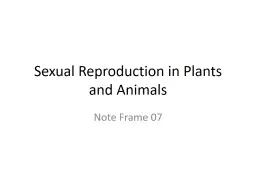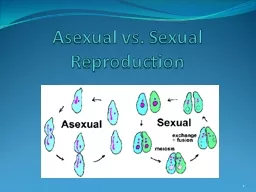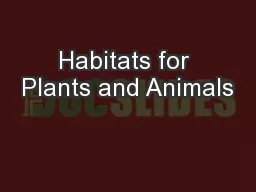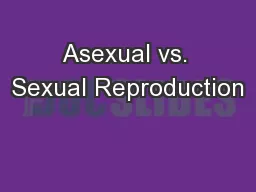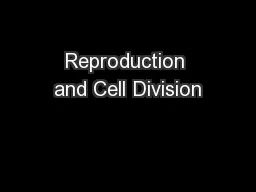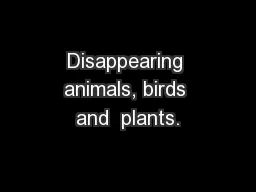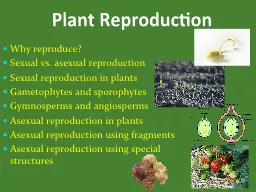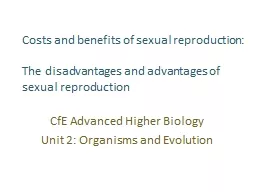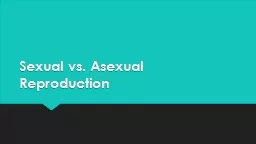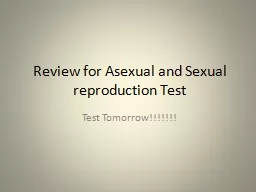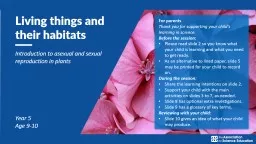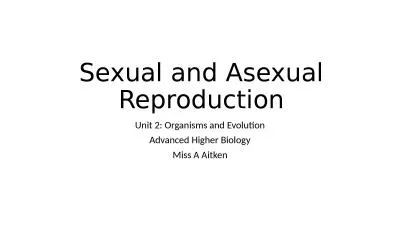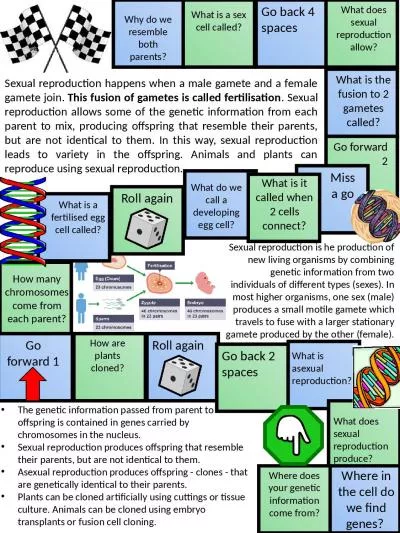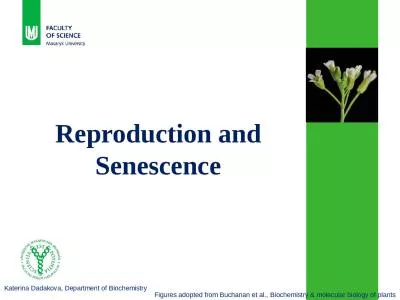PPT-Sexual Reproduction in Plants and Animals
Author : patchick | Published Date : 2020-06-15
Note Frame 07 Key Terms Pistil Embryo Ovary Testes Behavioural adaptation Stamen Sperm Gonads Pollen Physical adaptation Sexual Reproduction Gonads reproductive
Presentation Embed Code
Download Presentation
Download Presentation The PPT/PDF document "Sexual Reproduction in Plants and Animal..." is the property of its rightful owner. Permission is granted to download and print the materials on this website for personal, non-commercial use only, and to display it on your personal computer provided you do not modify the materials and that you retain all copyright notices contained in the materials. By downloading content from our website, you accept the terms of this agreement.
Sexual Reproduction in Plants and Animals: Transcript
Download Rules Of Document
"Sexual Reproduction in Plants and Animals"The content belongs to its owner. You may download and print it for personal use, without modification, and keep all copyright notices. By downloading, you agree to these terms.
Related Documents

